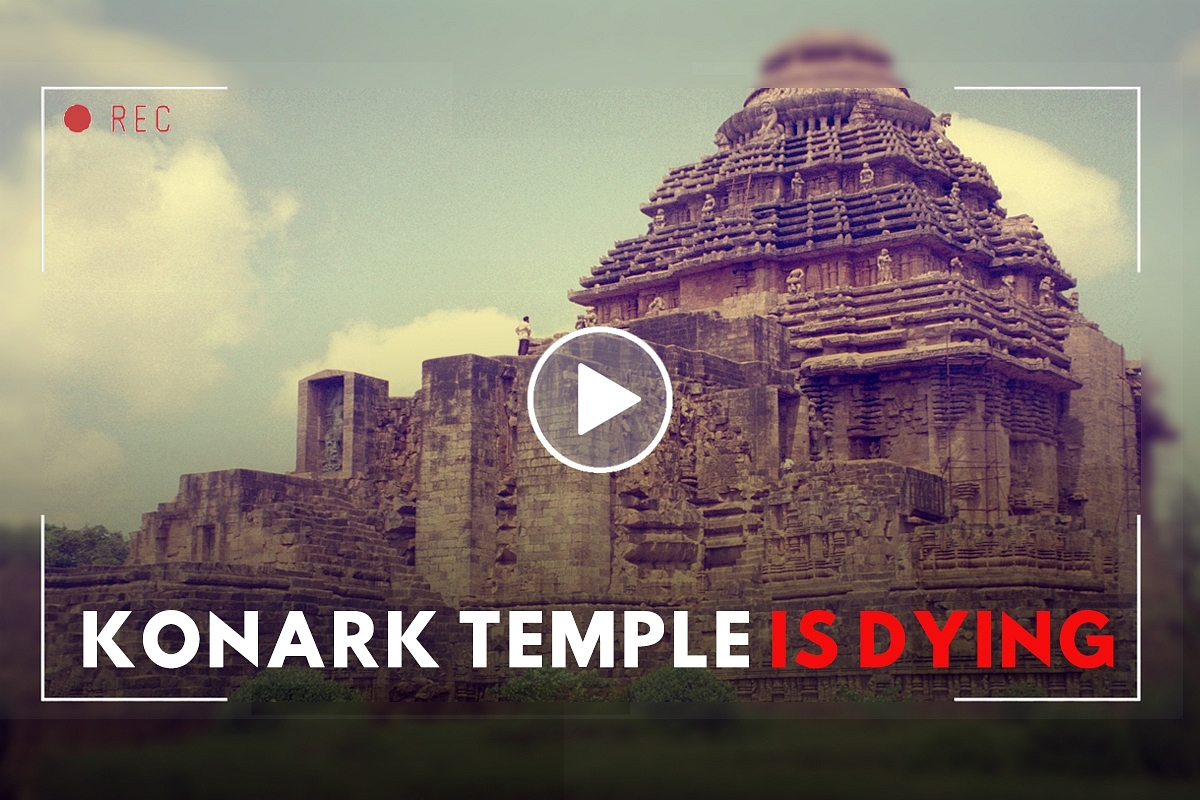Videos
Sun Is Setting On The Konark Sun Temple. How Long Before We Rescue It?

To save Konark, we’ll have to act quickly. Or see it wither away.
Transcript:
It took over 1,200 artisans and 12 years to build, but today it stands there, alone and uncared for, because of people’s lack of will to preserve it.
That is the story of the Sun Temple of Konark, which, despite its rich legacy beginning in the thirteenth century, has the sun setting on it rather quickly.
An exemplar of Kalinga architecture, this temple is one where, as described by Rabindranath Tagore, “the language of stone surpasses the language of humans.”
Built by King Langula Narasingha Deva of the Ganga Dynasty, the temple was conceived as a chariot mounted on 24 wheels, each about 10 feet in diameter and drawn by seven mighty horses.
But today, one can only lament at the sad state of this once majestic temple.
Despite the collapse of the main tower many centuries ago, hundreds of thousands of people still visit the Konark Sun Temple every year. During the monsoons, visitors don’t hesitate to wade through knee deep water even as clogging takes its toll on the temple complex.
But, this is no case for complacency. If care is not taken to keep this monument at its best, the temple will wither away and be relegated to the pages of history books.
Though conservation efforts have been on for centuries, things just aren’t getting better.
At a meeting of various scholars in December 2009, the Indian National Trust for Art and Cultural Heritage had raised the issue of replacement of various sculpted stones with plain ones. But to this day, nothing has been done to reverse this.
In 1903, when an excavation was attempted near the temple, the then Lieutenant Governor of Bengal, J A Bourdillon, ordered the temple to be sealed and filled with sand to prevent the collapse of the Jagamohana, which is the assembly hall in the temple.
A century later, in 2006, a consulting firm, SIMTEK, visited Konark and found that the sand stored inside had collapsed 16 ft below. They recommended immediate removal of the sand from inside the structure. But the advice fell on deaf ears.
The mukhasala, too, which was repaired in 1905, was damaged when a heavy stone popped out of its north east corner in 1998. The media highlighted this issue, but no enquiry was commissioned.
There are many such examples to give.
But in a land that boasts of numerous schools of poetry literally set in stone, it is sad to see a structure of this stature be left at the mercy of time.
Abu’l Fazl, the well-known chronicler of Akbar’s court, had in his Ain-i-Akbari written about the Sun Temple that “even those whose judgement is critical and who are difficult to please stand astonished at its sight."
Yet, more than three decades after UNESCO accorded it the status of a World Heritage Site, the temple still stands uncared for, awaiting rescue.
How long before we do something to save it?
If you liked this video of ours, know that we regularly make videos on Indian culture and heritage. To keep up with them, I urge you to like and share our videos and subscribe to our YouTube channel. That will keep us going and help bring more quality video content to you.
*
Subscribe to Swarajya on YouTube for a regular stream of videos across areas of culture and heritage, politics, economy, foreign affairs, and much else.
Introducing ElectionsHQ + 50 Ground Reports Project
The 2024 elections might seem easy to guess, but there are some important questions that shouldn't be missed.
Do freebies still sway voters? Do people prioritise infrastructure when voting? How will Punjab vote?
The answers to these questions provide great insights into where we, as a country, are headed in the years to come.
Swarajya is starting a project with an aim to do 50 solid ground stories and a smart commentary service on WhatsApp, a one-of-a-kind. We'd love your support during this election season.
Click below to contribute.
Latest